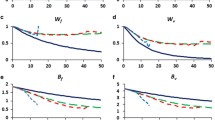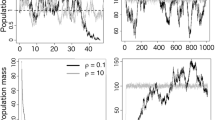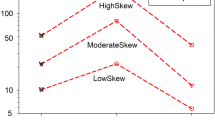Abstract
Small populations at risk of extinction due to threshold or competitive exclusion have a vested interest in rapid growth. Taking chance of survival into account for diploid populations, Fisher’s theorem predicts a sex ratio favoring females under certain circumstances. Theoretical consideration of competitive exclusion shows such circumstances are reasonable under accepted modeling assumptions.
Similar content being viewed by others
References
Karlin, S., 1986. Sex Ratio Evolution. Princeton Univ. Press, Princeton.
Murray, J.D., 2001. Mathematical Biology, vol. I, 3rd edn. Springer, New York.
Taylor, C., et al., 2004. Evolutionary game dynamics in finite populations. Bull. Math. Biol. 66, 1621–1644.
Johnson, S.D., 1994. Sex ratio and population stability. OIKOS 69(1), 172–176.
Cushing, J.M., et al., 2004. Some discrete competition models and the competitive exclusion principal. J. Differ. Equ. Appl. 10(13–15), 1139–1151.
Werren, J.H., 1980. Sex ratio adaptations to local mate competition in a parasitic wasp. Science 208(4448), 1157–1159.
Author information
Authors and Affiliations
Corresponding author
Rights and permissions
About this article
Cite this article
Johnson, S.D. Theoretical Considerations of Fisher’s Theorem in Small At-Risk Populations. Bull. Math. Biol. 72, 221–229 (2010). https://doi.org/10.1007/s11538-009-9455-1
Received:
Accepted:
Published:
Issue Date:
DOI: https://doi.org/10.1007/s11538-009-9455-1




